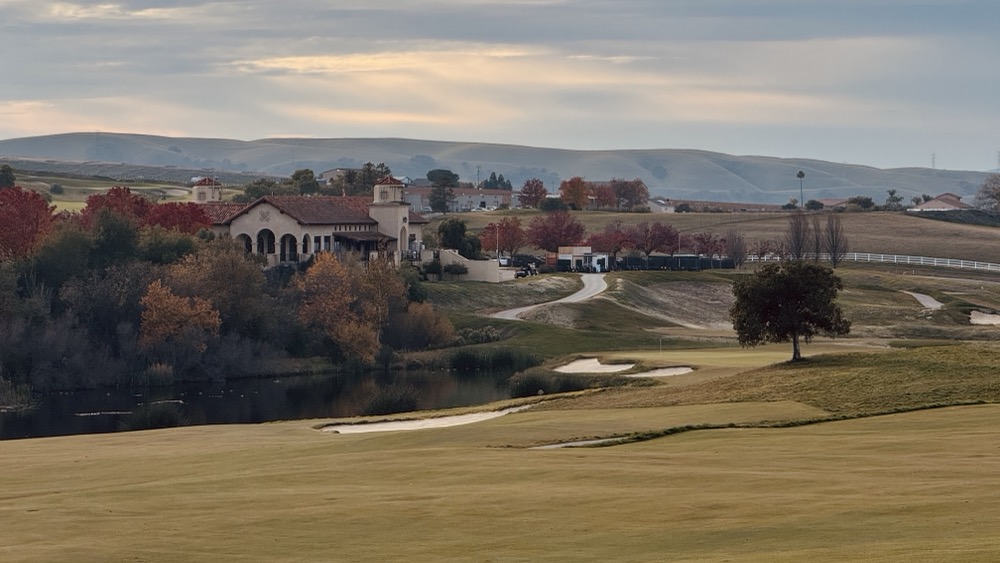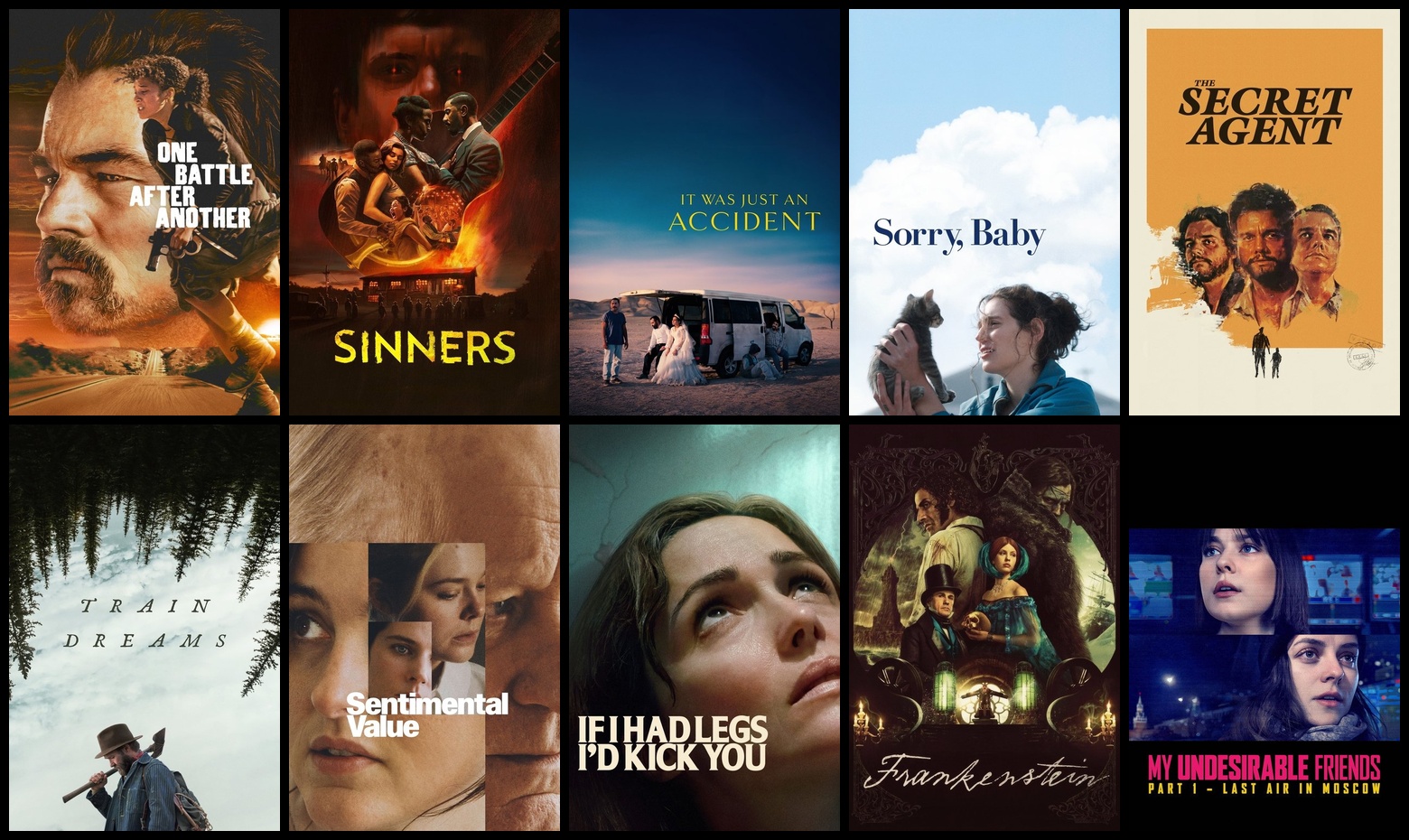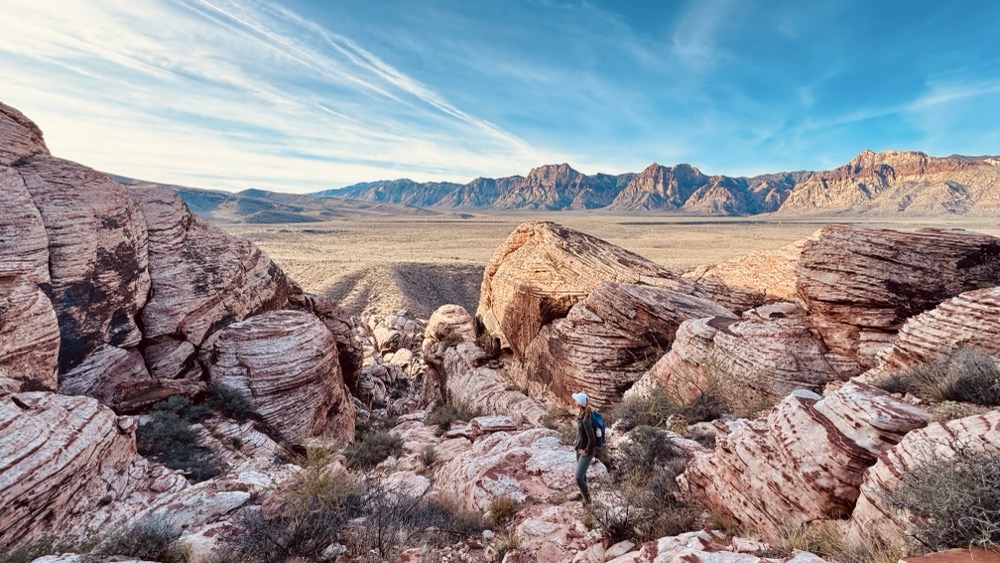Self-Drive in Botswana Part 2: the Wet Part
We have moved up to the northeast corner of Botswana for our exploration of the Chobe National Park over five days and four nights.
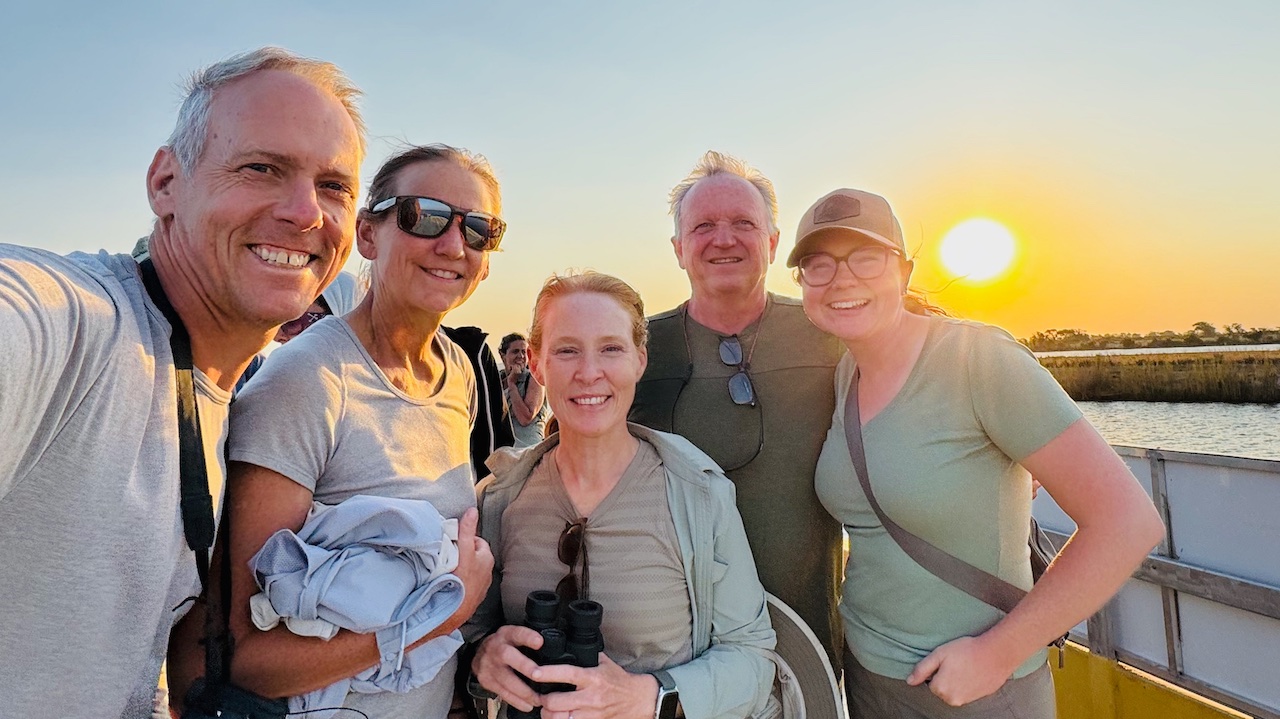 Boating on the Chobe River
Boating on the Chobe River
The Chobe River raises and lowers, but always seems to be flowing. It empties into the Zambezi river after which they pour over Victoria Falls.
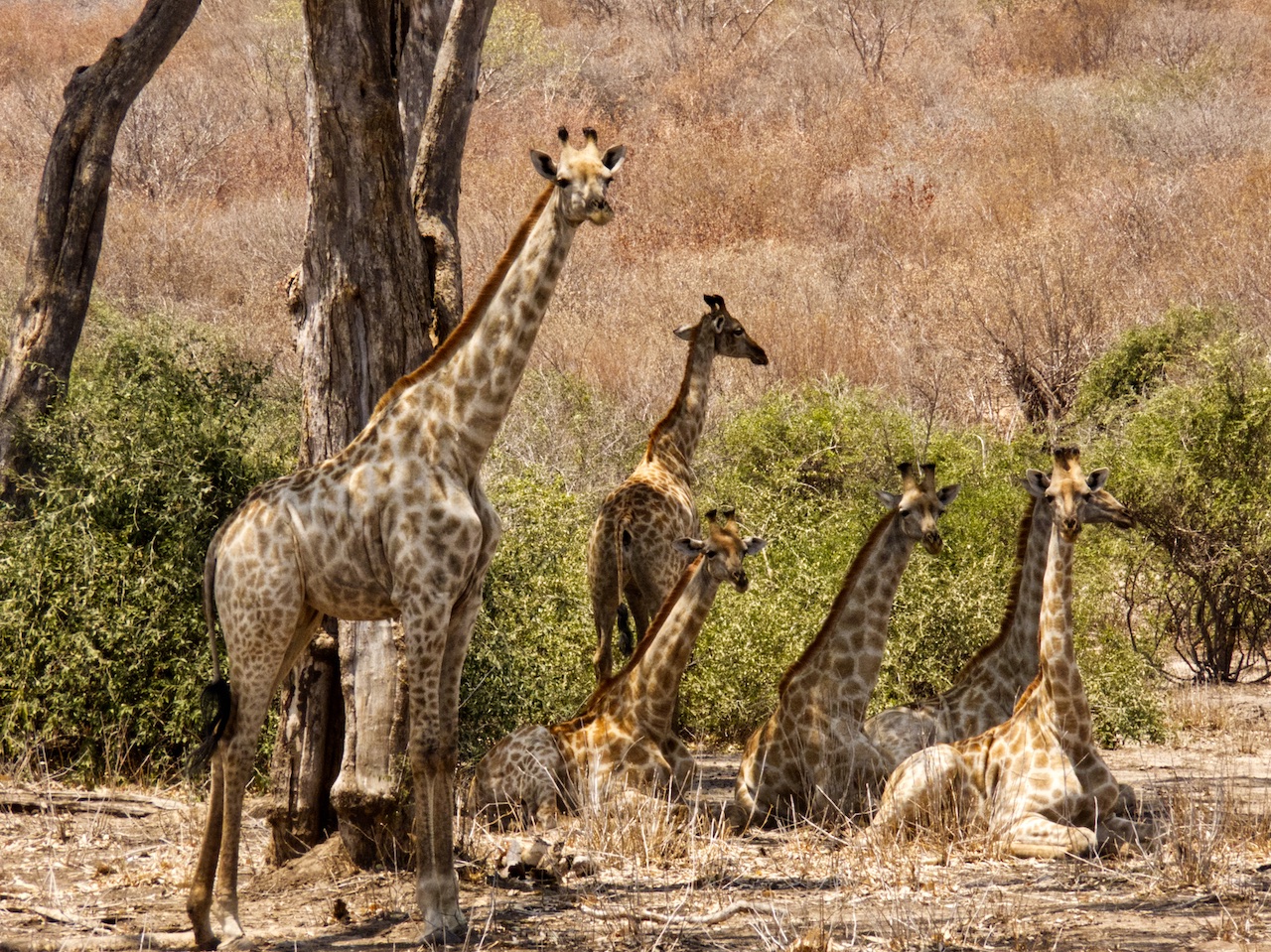 Giraffes resting
Giraffes resting
Our entry to Chobe started with a long drive up the eastern border with Zimbabwe, at first on the A33 tar highway but then we strategically moved over to the border to finish our drive going up the Hunter’s Road. We turned off the highway as we entered the Kasane Forest Extension and enjoyed a two-hour, 27 mile journey along the border. It started slow but quickly turned into a game drive as we started passing by some safari lodges that built little watering holes. We saw giraffes, elephants, warthogs, and plenty of antelope.
Upon arriving in our launch town of Kasane, we proceeded straight to our Chobe Safari Lodge, our home and campground for a single night. We were hoping to get on at least one boating excursion, and we managed to get on two. After a takeaway lunch we joined a big group double-decker boat for a sundowner cruise up the Chobe to see what we could see.
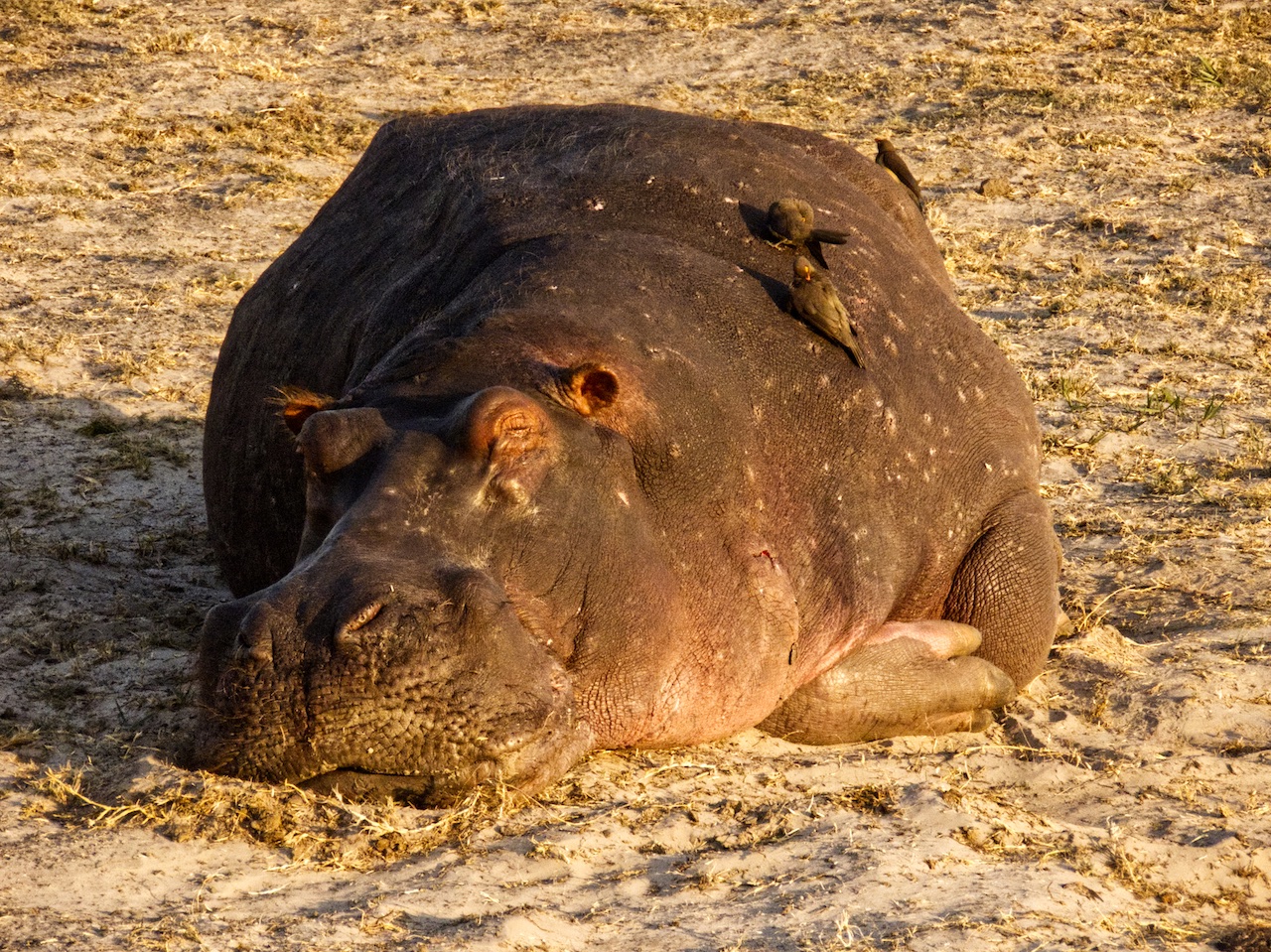 Hippo resting on beach
Hippo resting on beach
The boat was crowded yet fun. This area has the largest concentration of African elephants anywhere, and we saw just a tiny sampling of them. There were also hippos resting on the beach and nestled in shallow wetlands.
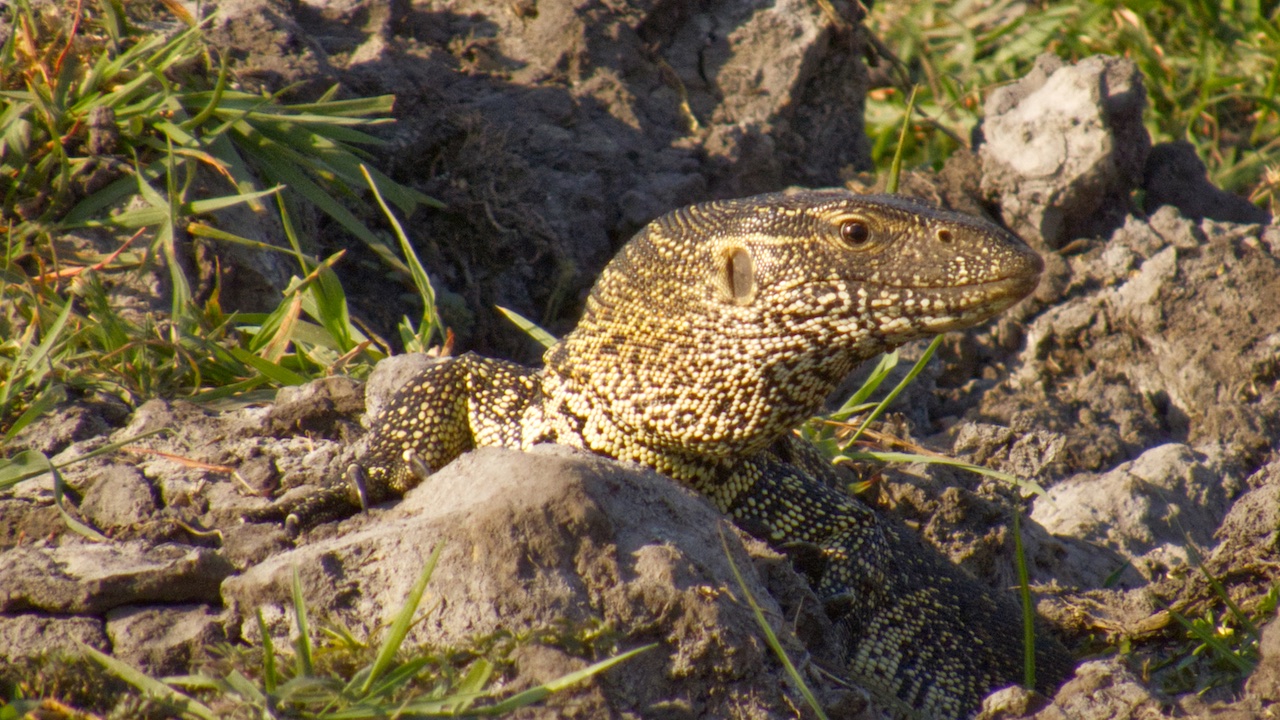 Water monitor
Water monitor
I got to see my first Nile (water) monitor viewing, seeing him crawl along a grassy island looking for dinner.
The next morning we did a 2+ hour private boat ride with our guide Wilson. Guides seem to like it when their guidees show an interest in birds. It gives them more to talk about, and takes some of the pressure off finding big-5 type animals. We are happy to be of service.
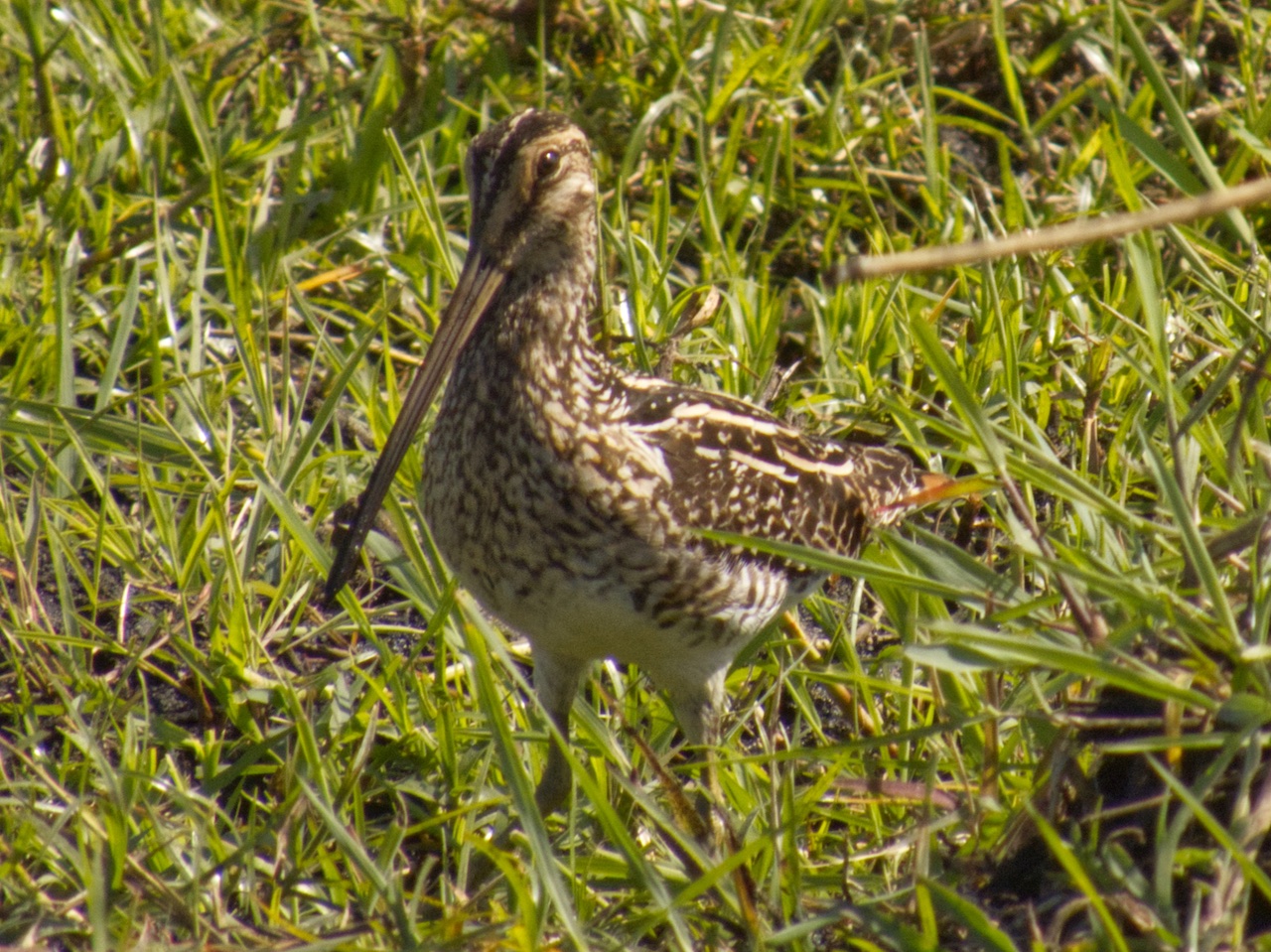 African snipe
African snipe
Also saw the African snipe a few times, finally getting a decent photo. Such a long beak! And we can say we went on a snipe hunt.
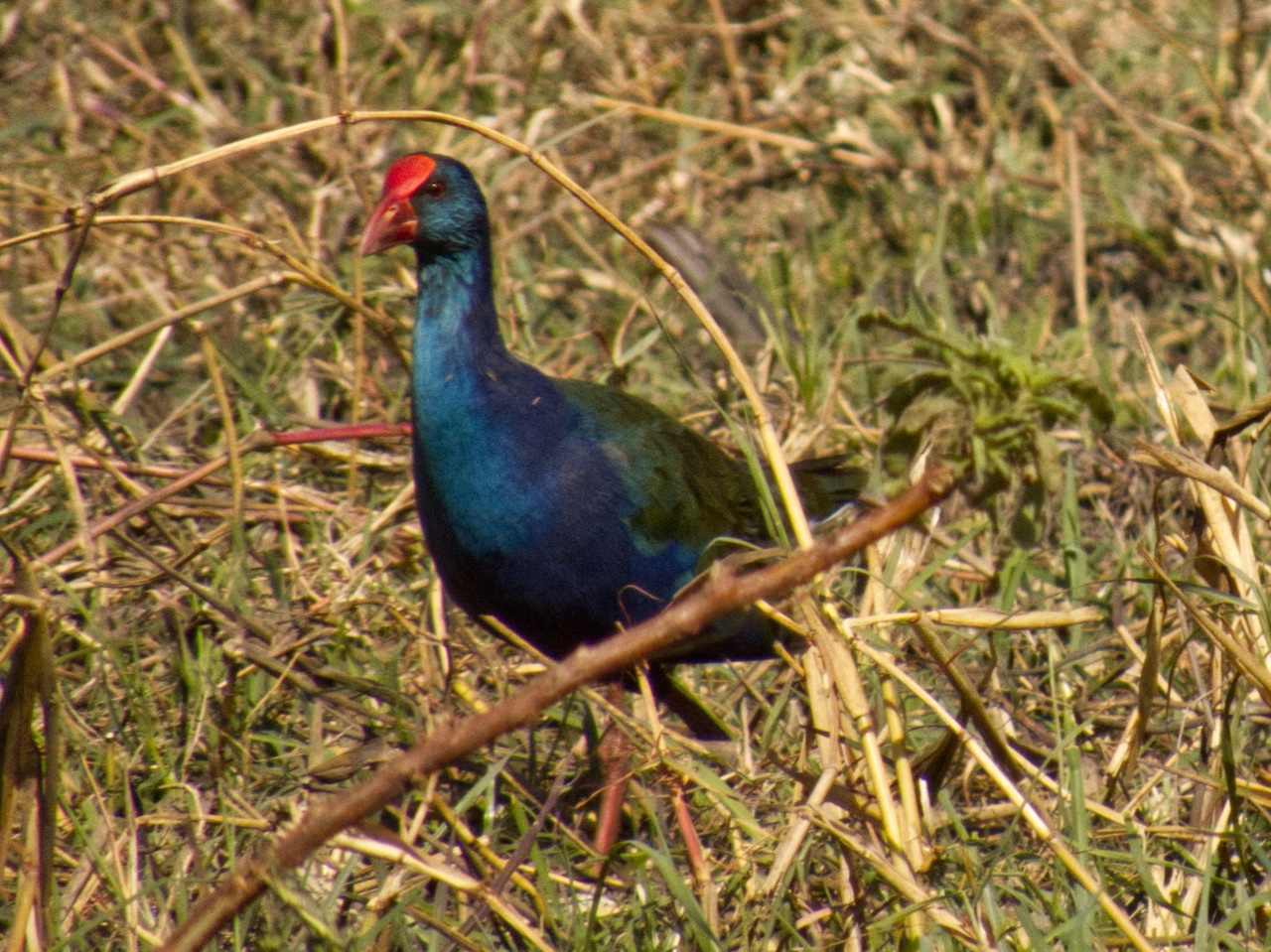 African swamphen
African swamphen
A new bird to add to my list was the African swamphen (I’m now up to 185 new species identified on this trip), a fairly rare sighting despite their beautiful and too-obvious-to-miss coloring.
 Chobe camp kitty
Chobe camp kitty
Our campsite at Chobe Safari Lodge was excellent, with river views, power, and a short walk to the campground dinner area where we had an excellent buffet dinner (impala with dumplings!). We didn’t need to seek out the birds: they came to us, and we find that we are getting our best bird photos of the trip with our iPhone 15 Pro Max 5x portrait mode. We also had a camp kitty guest who stayed with us quite a while, and even did a nose-nose kiss with a female bushbuck.
After our morning private boat, we did what might be our final grocery supply at Spar and Choppies in Kasane, also topping up on fuel and having lunch at Nandos.
The trip from the Kasane to our first park campsite, Ihaha, was a spectacular game drive along the water. But first we had to get through the Chobe gate, and as their payment terminal was down we had to do another trip back to town to visit an ATM. Smarter move would have been to expect to pay cash from the start.
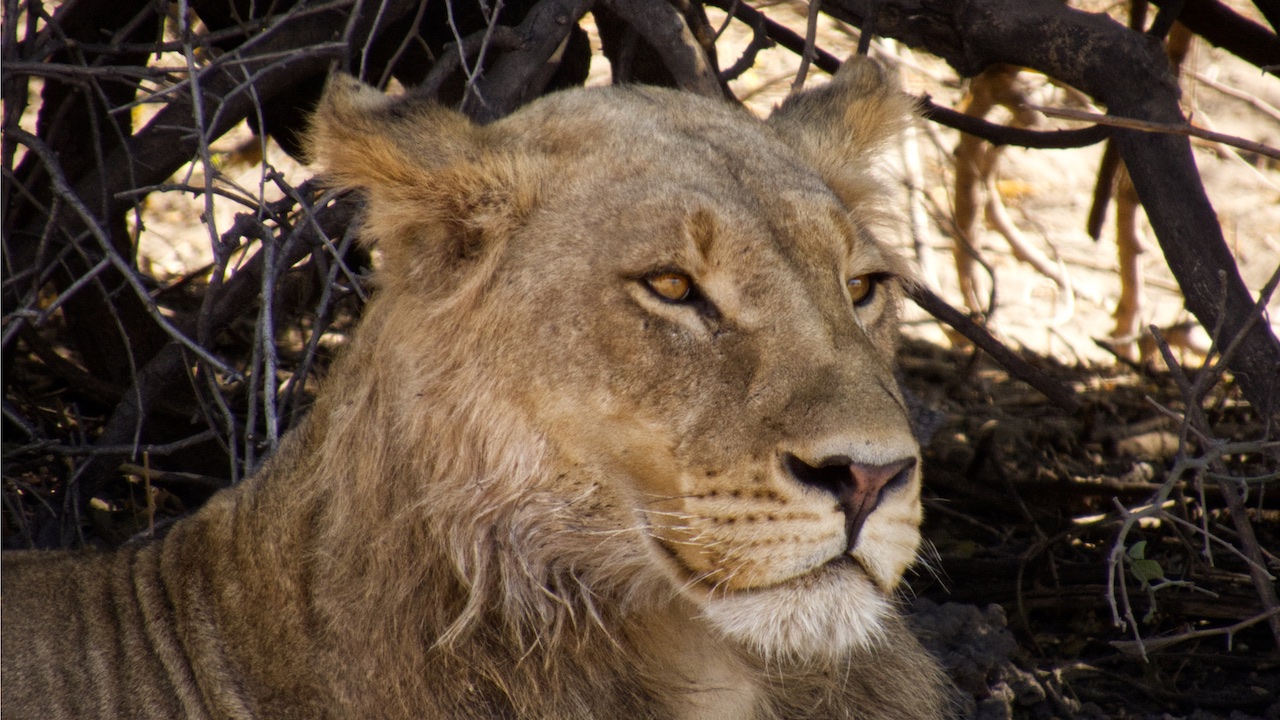 Young male lion
Young male lion
We are starting to find big cats on our own, without having to join a cluster of safari vehicles already looking. On the drive we took a dead-end spur along the river, knowing we’d have to turn back to hit the road and bypass two lodges before returning to the river. The payoff was high as Karen spotted a young male lion resting in the shade.
 Lioness and cub by the water
Lioness and cub by the water
A bit later I was the one to spot a lioness headed down to a watering hole near the river. As we got closer we found that she had two cubs with her.
We had grave concerns because the female definitely had an injured leg, and the three of them looked a bit skinny. Our hopes elevated a bit as we drove on as we found another lioness nearby surveying the horizon for dinner. Given how close they were, we were hopeful that she’s a sister of the mother. Or the sister could be the one hanging out to watch the cubs.
Camp Ihaha was great, but we arrived very late after our 4 hour, 26 mile drive in along the river. This would be a good place to stay for a few nights.
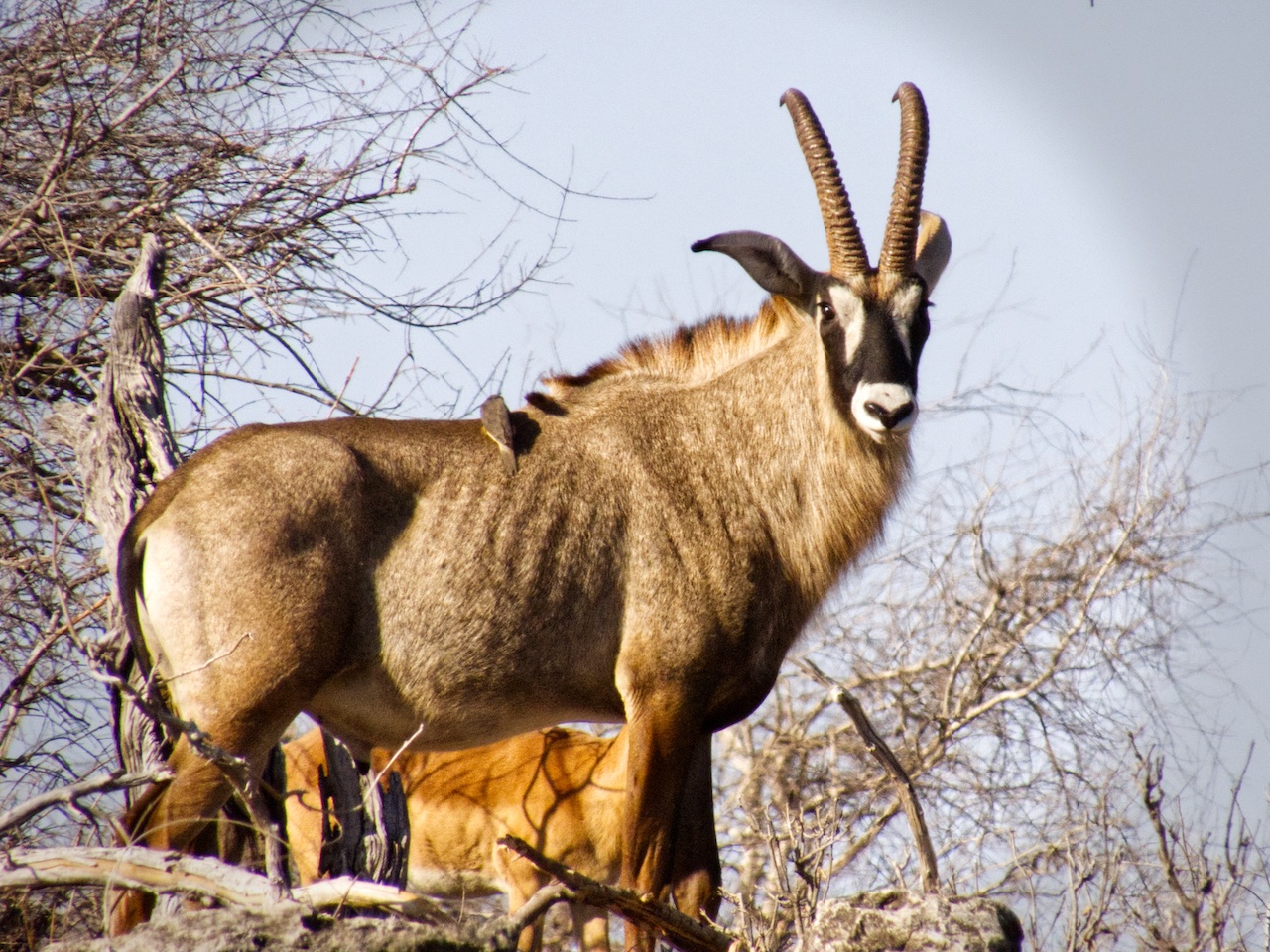 Roan antelope
Roan antelope
The next day was the long drive to Linyati, another section of the park that would require some rough overlanding through a transit area without much hope of game. The start was great as it went along the river. Right away we spotted a new antelope for us: the majestic roan antelope.
The offroading was tough and we had to do our first recovery. I’ll do a post later about the fun of driving offroad on this adventure.
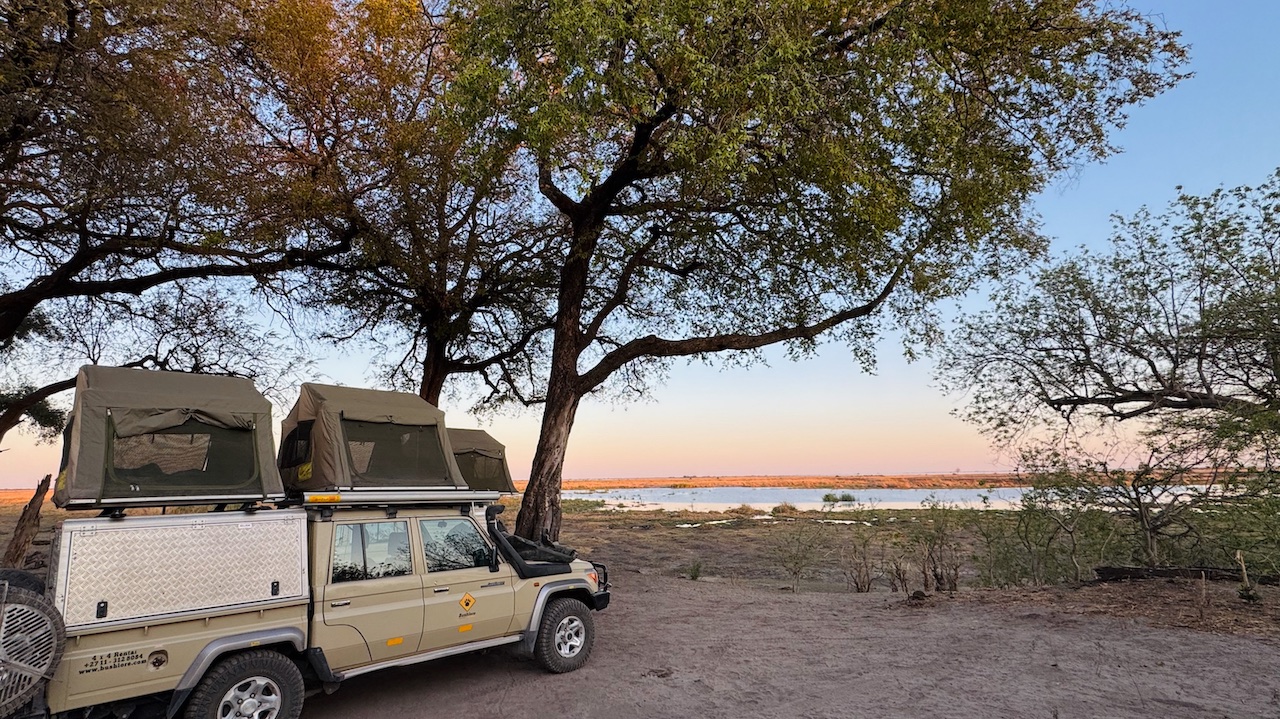 Campsite at Linyati
Campsite at Linyati
The Linyati campsite ranks among the best we’ve ever stayed at. Right now we are sitting here, having a long lunch break after a brief morning drive. There’s simply no need to go for a drive here: we are seeing over 30 hippos sunning on the beach, maybe 50 elephants grazing the flood plain, and countless woodland and shorebirds.
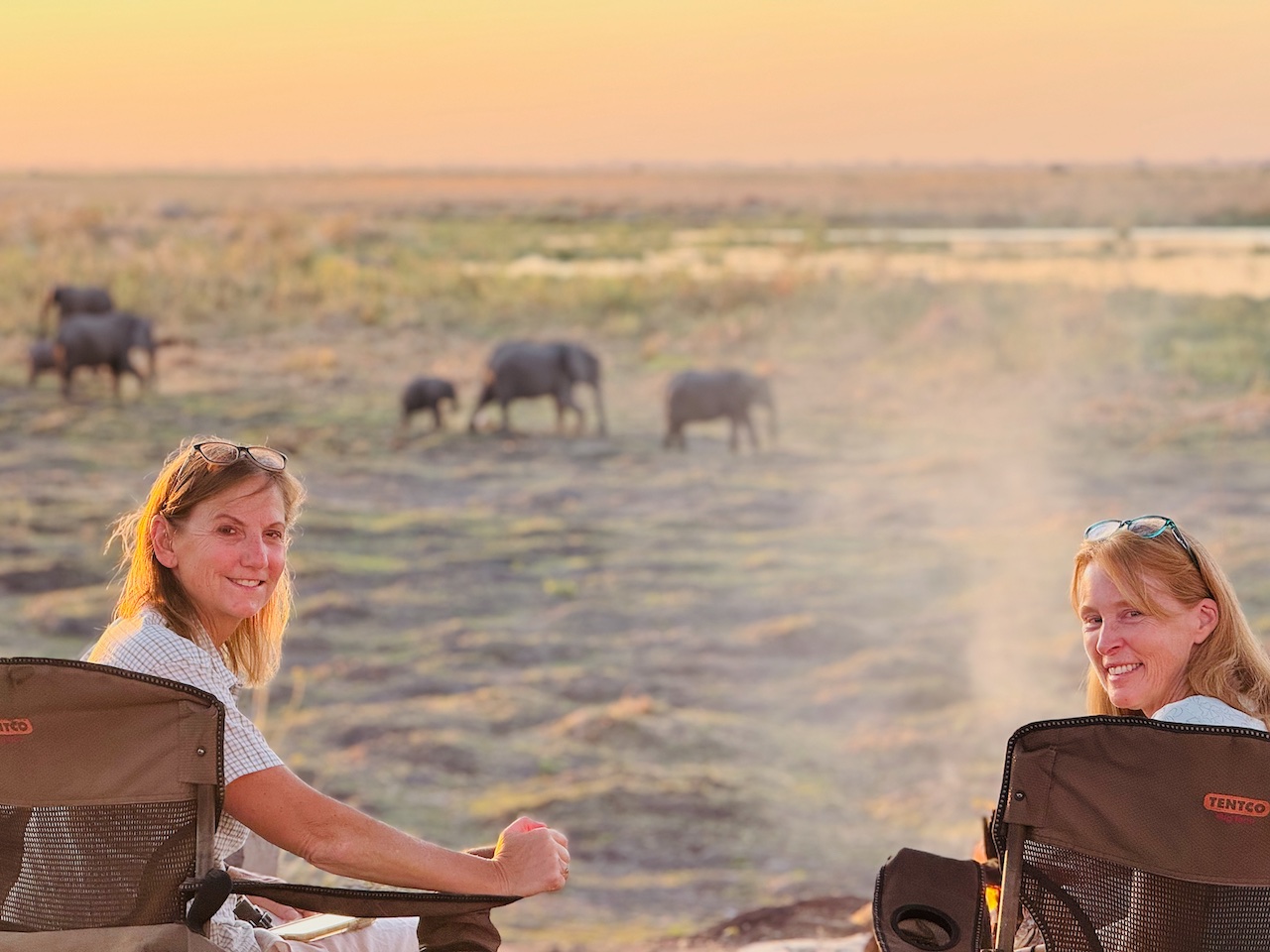 Karen and Julie on back porch with elephants
Karen and Julie on back porch with elephants
Oh, and the sun sets right off the back porch of our campsite (there’s not really a porch, but we do have a ledge that falls off into the flood plain).
The only thing causing us concern here: we saw a dead young elephant near the road coming into camp, and discussed it with the camp concession staff. Apparently elephants, hippos, and buffalo are dying from a disease. Don’t know anything else about it, but obviously problematic. The good news is that it looks like they are all reproducing without any issues.
We still have one more night and day in Chobe, but I don’t suspect there will be any big additions by tomorrow when we move on to the Khwai Safari Grounds for a single night.






